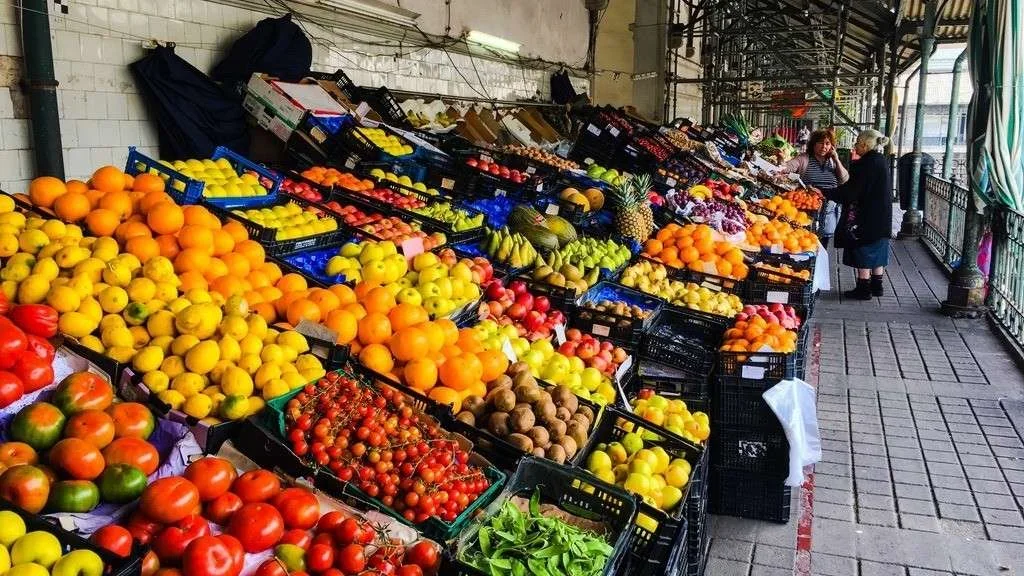Why Farmers’ Markets Are Failing Communities
Once Upon a Time…
Farmers’ markets used to be the heartbeat of the community. They were where you went to find fresh food at a fair price, to connect with the people growing it, and to keep your dollars local. Farmers’ markets weren’t fancy. They weren’t exclusive. Farmers’ markets were just a practical way to buy good food, directly from the people who grew it.
Fast forward to today, and things look a lot different.
Instead of being the best place to get affordable, farm-fresh food, farmers’ markets have become boutique shopping experiences. Many people—especially low-income families—can’t afford to shop there regularly. And instead of thriving small farmers bringing their goods to market, many of them struggle to make a living, forced to rely on second jobs or opt out entirely.
Farmers Are Struggling. Consumers Are Struggling.
So who is the market for?
Let’s start with the farmers; 84% of family farmers work a second job to survive.
Small and mid-sized farms can’t compete with large-scale agribusiness, so they often rely on farmers’ markets to sell directly to consumers at prices that actually sustain their businesses. That’s why the produce at your local market is often more expensive than what you’ll find in a grocery store.
But that’s a problem for shoppers, right?
A decade ago, farmers’ markets were where you went to stretch your dollar. Today, for many, they’re a luxury. While some markets offer nutrition incentive programs like CalFresh matching to help lower-income shoppers afford fresh food, those programs don’t exist everywhere—and they don’t address the core issue: the system has shifted away from local food as a community good and toward local food as a premium product.
Small farmers need higher prices to make ends meet, absolutely.
Consumers need lower prices to afford fresh food, no question.
Is This The Reality Now?
Picture a bustling farmers’ market in a small European town. Not fancy. It’s not a luxury weekend activity. It’s just part of life. Families stroll through the stalls, picking up fresh produce for the week. Prices are fair, not because farmers are cutting corners, but because the system is built to keep small farmers in business while keeping fresh food affordable. The government chips in with support programs. The culture prioritizes short supply chains. It’s just how people eat.
Now, picture a farmers’ market in the U.S. The vibe is different. The market is still lively, the produce is still beautiful, but the price tags? Steep. Not because the farmers are getting rich—far from it. They’re just trying to survive. And they can’t afford to charge less because they don’t have the safety net that their European counterparts do. They’re competing in an economy where industrial farms and grocery giants have rewritten the rules.
So, while European farmers’ markets remain everyday essentials—places where fresh food is accessible to all—many American markets have morphed into something else. They’ve become curated experiences, reserved for those who can afford to pay a premium for what should be basic: good, local food.
The Bottom Line: Farmers’ Markets Need More than Just Farmers
A farmers’ market isn’t just a collection of tents and tables. It’s a promise—one that says fresh, local food should be within reach, not just for those who can afford a $7 heirloom tomato, but for everyone. It’s supposed to be a space where farmers can thrive, where communities can connect, and where food doesn’t have to travel thousands of miles before landing on someone’s plate. But somewhere along the way, we broke that promise.
Right now, small farmers are doing everything they can to stay in business. They’re fighting against rising land costs, middlemen who take too much, and a food system that wasn’t built for them. They need farmers’ markets. They need direct access to customers willing to pay for the value of their work. But customers need something too—food that’s not just fresh, but also affordable.
That’s why farmers’ markets can’t just rely on farmers alone to make the system work. We need more. More support, more investment, and more policies that ensure these markets are accessible, not just for the weekend crowd, but for entire communities.
Imagine a different version of the future—one where farmers’ markets are treated as public goods, where funding isn’t just for large-scale agribusiness, but for the small farmers who actually grow the food we want to eat. Imagine a world where local food hubs help farmers get their produce into schools, hospitals, and grocery stores, where land is protected from corporate buyouts, and where public dollars make sure farmers’ markets remain a viable, affordable option for all.
Because here’s the truth: farmers’ markets were never meant to be exclusive. They were meant to be the bridge between the people who grow food and the people who eat it. If we want them to work the way they were intended, we have to stop treating them as luxury pop-ups and start treating them like the essential pieces of our food system that they are.

